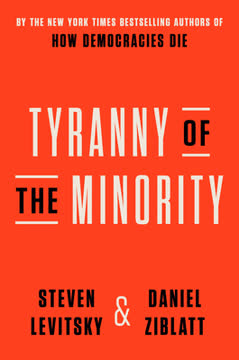Key Takeaways
1. Initial Success Masked Strategic Flaws
But the initial success of the military campaign had surpassed the expectations of even the most optimistic field commanders. Victory appeared in hand.
Swift victory illusion. The rapid collapse of the Taliban regime in late 2001 created a false sense of accomplishment. The U.S. military, with its superior air power and support for the Northern Alliance, quickly achieved its initial objective of dismantling al-Qaeda's base of operations. This early success, however, masked deeper strategic flaws that would plague the war for the next two decades.
Lack of exit strategy. Despite the swift initial victory, the Bush administration failed to articulate a clear exit strategy or define the conditions under which U.S. troops would withdraw. This lack of foresight set the stage for a prolonged and ultimately unsuccessful intervention.
Overconfidence and complacency. The early success bred overconfidence and complacency among U.S. leaders, who underestimated the resilience of the Taliban and the complexities of Afghan society. This overconfidence led to a series of missteps and miscalculations that would haunt the war for years to come.
2. Mission Creep and Unclear Objectives Doomed the War
“If there was ever a notion of mission creep it is Afghanistan,” he said in a Lessons Learned interview. “We went from saying we will get rid of al-Qaeda so they can’t threaten us anymore to saying we are going to end the Taliban. [Then we said] that we will get rid of all the groups the Taliban works with.”
Expanding goals. The initial, limited objective of dismantling al-Qaeda quickly expanded to include regime change, nation-building, and the eradication of opium production. This mission creep diluted resources and created unrealistic expectations.
Lack of focus. The U.S. struggled to define with precision what it was hoping to accomplish in Afghanistan. The goals and objectives soon veered off into directions that had little to do with 9/11. The lack of clear, attainable objectives made it difficult to measure progress or develop a coherent strategy.
Unrealistic expectations. The U.S. set an "impossible" goal: to create a stable, American-style government in Afghanistan with democratic elections, a functioning Supreme Court, an anti-corruption authority, a women’s ministry and thousands of newly constructed public schools with a modernized curriculum. This unrealistic goal was unattainable given Afghanistan's history, culture, and socio-economic conditions.
3. Misunderstanding the Enemy Prolonged the Conflict
On a broader level, the United States had jumped into the war with only a hazy idea of whom it was fighting—a fundamental blunder from which it would never recover.
Blurring the lines. The Bush administration blurred the line between al-Qaeda and the Taliban, treating them as a single enemy despite their distinct goals and motivations. This led to a war against people who had nothing to do with 9/11.
Ignorance of Afghan society. The U.S. jumped into the war with only a hazy idea of whom it was fighting. At the war’s outset, scarcely any U.S. officials possessed an elementary understanding of Afghan society or had visited the country since the American embassy in Kabul closed in 1989.
Motivations for fighting. One reason the war dragged on for so long was because the United States never really understood what motivated its enemies to fight. It was much easier to divide the country into two camps: good guys and bad guys.
4. The Iraq War Diverted Critical Resources and Attention
It soon became apparent that Bush’s decision to invade Iraq was a titanic mistake—not just for Iraq, but for Afghanistan.
Strategic distraction. The decision to invade Iraq in 2003 diverted critical resources and attention away from Afghanistan, allowing the Taliban to regroup and regain strength. The Iraq War became the priority, while Afghanistan was relegated to a secondary effort.
Under-resourced effort. With the Pentagon preoccupied by Iraq, the already blurry mission in Afghanistan grew even hazier for units in the field. The U.S. military began making plans to take Baghdad in December 2001, while bin Laden was escaping from Tora Bora.
Lost opportunities. The Iraq War overshadowed key opportunities to stabilize Afghanistan, such as capturing bin Laden at Tora Bora or negotiating a peace settlement with the Taliban in 2001. The decision to invade Iraq was a titanic mistake—not just for Iraq, but for Afghanistan.
5. Nation-Building Efforts Were Misguided and Unsustainable
After the United States invaded Afghanistan, President George W. Bush told the American people that they would not get stuck with the burden and expense of “nation-building.” But that presidential promise, repeated by his two successors, turned out to be one of the biggest falsehoods uttered about the war.
Failed promises. Despite initial promises to avoid nation-building, the U.S. embarked on a massive and costly effort to transform Afghanistan into a modern, democratic state. This project was plagued by unrealistic goals, poor planning, and a lack of understanding of Afghan culture.
Top-down approach. The U.S. imposed a centralized, American-style government on Afghanistan, which conflicted with the country's history of decentralized authority and tribal customs. This top-down approach alienated many Afghans and undermined the legitimacy of the government.
Lack of capacity. The U.S. government lacked the ability and capacity to create foreign armies from whole cloth. Just as it had forgotten how to fight an insurgency since Vietnam, the U.S. military had not built anything on the scale of the Afghan army in decades.
6. Corruption Undermined Governance and Security
After years of American patronage, the star-crossed campaign to transform Afghanistan into a modern nation swung from extreme to extreme in terms of funding.
Endemic corruption. Corruption became a defining feature of the Afghan government, undermining its legitimacy and fueling the insurgency. Warlords, government officials, and contractors all profited from the war, diverting resources away from essential services and development projects.
U.S. complicity. The U.S. government inadvertently fueled corruption by providing vast sums of money to Afghan power brokers without adequate oversight. This created opportunities for bribery, extortion, and embezzlement.
Erosion of trust. Corruption eroded public trust in the Afghan government and the U.S.-led coalition, making it harder to win the support of the Afghan people. Many Afghans saw the Taliban as a less corrupt alternative to the government.
7. Pakistan's Duplicity Fueled the Insurgency
By 2003, as the Taliban and al-Qaeda escalated their hit-and-run attacks on U.S. and allied forces, there was no mystery about where the guerrillas were coming from. They had regrouped on the other side of Afghanistan’s 1,500-mile border with Pakistan.
Safe havens. The Taliban and other insurgent groups found safe havens in Pakistan's tribal areas, where they could regroup, train, and launch attacks across the border into Afghanistan. The U.S. military was forbidden from crossing into Pakistani territory, limiting its ability to combat the insurgency.
Double game. The Pakistani military and intelligence services played a double game, providing support to the U.S. while also harboring and aiding the Taliban. This duplicity undermined U.S. efforts to stabilize Afghanistan.
Strategic interests. Pakistan's military establishment was determined to influence Afghanistan over the long term and—because of regional politics and ethnic factors—saw the Taliban as its best vehicle to exert control.
8. Metrics Were Manipulated to Show Progress
Speaking frankly because they assumed their remarks would not become public, U.S. officials confessed to SIGAR that the war plans had fatal flaws and that Washington had wasted billions of dollars trying to remake Afghanistan into a modern nation.
Rosy assessments. U.S. officials routinely distorted statistics to make it appear the United States was winning the war when that was plainly not the case. This created a false sense of progress and prevented a realistic assessment of the situation on the ground.
Suppression of negative information. Bad news was often stifled, and negative assessments were discouraged. This created a culture of self-deception that made it difficult to address the war's underlying problems.
Misleading the public. The U.S. government engaged in a sustained effort to deliberately mislead the public about the war, just as they had in Vietnam. This eroded public trust and made it harder to sustain support for the war.
9. The U.S. Failed to Grasp Afghan Culture and Society
To an ignorant foreigner, Afghanistan’s history, complex tribal dynamics, and ethnic and religious fault lines felt bewildering. It was much easier to divide the country into two camps: good guys and bad guys.
Cultural ignorance. The U.S. military jumped into the war with only a hazy idea of whom it was fighting. At the war’s outset, scarcely any U.S. officials possessed an elementary understanding of Afghan society or had visited the country since the American embassy in Kabul closed in 1989.
Imposition of Western values. The U.S. tried to impose Western values and institutions on Afghanistan, without taking into account the country's unique history, culture, and social dynamics. This led to a series of unintended consequences and alienated many Afghans.
Lack of language skills. Years after the war started, the U.S. military still had almost no uniformed personnel who could speak Dari or Pashto fluently. Few troops possessed even a remote grasp of Afghanistan’s history, its religious customs or tribal dynamics.
10. The Taliban Proved Resilient and Adaptable
While the Taliban was easy to demonize because of its brutality and religious fanaticism, it proved too large and ingrained in Afghan society to eradicate.
Underestimation of the Taliban. Most U.S. officials wrongly assumed the Taliban would never pose a serious threat again. This misjudgment led to a series of strategic errors and allowed the insurgency to regain strength.
Local support. The Taliban was able to draw support from Pashtun tribes in southern and eastern Afghanistan, who saw the group as a legitimate force for restoring order and resisting foreign occupation. This local support made it difficult to defeat the Taliban militarily.
Adaptability. The Taliban proved to be a resilient and adaptable enemy, able to adjust its tactics and strategies in response to U.S. and Afghan military operations. This made it difficult to gain a decisive advantage on the battlefield.
Last updated:
Review Summary
The Afghanistan Papers: A Secret History of the War is praised as an eye-opening, well-researched account of the U.S.'s 20-year war in Afghanistan. Whitlock's investigative journalism exposes the government's deception, military incompetence, and wasteful spending. Readers appreciate the detailed analysis of strategic failures, cultural misunderstandings, and corruption. The book draws parallels to Vietnam and highlights the lack of clear objectives. While some find it depressing, most consider it an important read for understanding the war's complexities and the reasons behind its ultimate failure.
Similar Books










Download PDF
Download EPUB
.epub digital book format is ideal for reading ebooks on phones, tablets, and e-readers.




